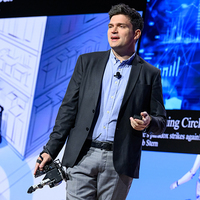
Marko Munih
Related Authors
Armağan Karahanoğlu
University of Twente
Amber Case
Lewis & Clark College
Ivanka Veneva
Bulgarian Academy of Sciences
Hubert Homaei
Universidad de Extremadura
Jorge Garcia Gutierrez
Universidad de Sevilla
Minas Liarokapis
The University of Auckland
Tommaso Lenzi
Northwestern University
Francesco Pescarmona
Istituto Italiano di Tecnologia / Italian Institute of Technology
Stefano Marco Maria De Rossi
Harvard University








Uploads
Papers by Marko Munih